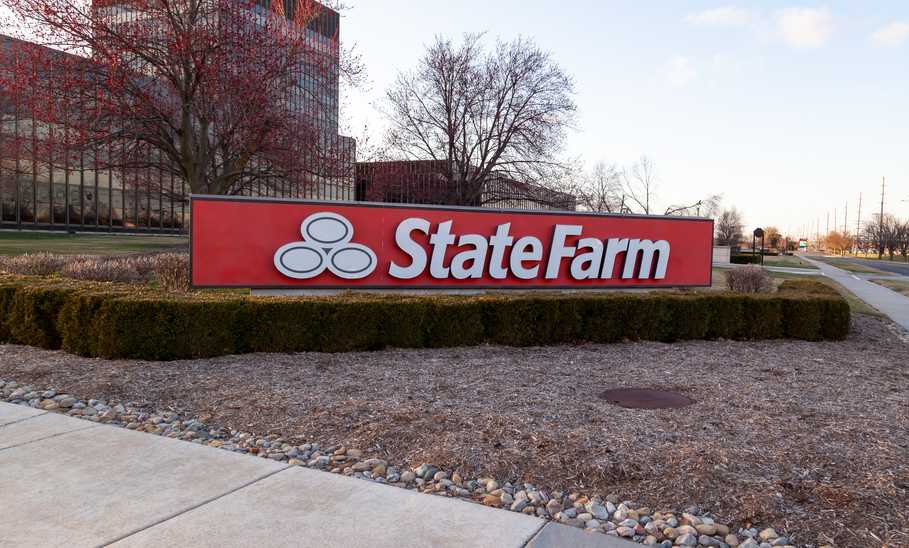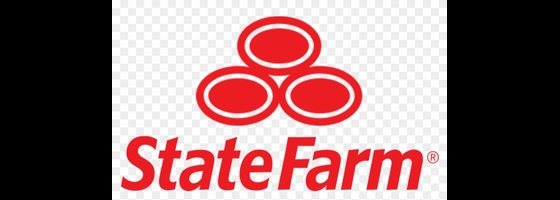State Farm Drive Safe and Save Review

Our evaluations and opinions are not influenced by our advertising relationships, but we may earn a commission from our partners’ links. This content is created by TIME Stamped, under TIME’s direction and produced in accordance with TIME’s editorial guidelines and overseen by TIME’s editorial staff. Learn more about it.
State Farm is one of the country’s largest and best-known car insurance brands. Its optional Drive Safe and Save program offers you the opportunity to get a discounted car insurance premium in return for sharing data about how you drive.
Insurers recognize that people with safer driving habits are at a lower risk of getting into an accident and filing a claim. That’s why many now offer usage-based insurance (UBI) programs that use telematics technology — which transmits data wirelessly to the company — to monitor how their customers drive. Lower-risk customers participating in these programs can earn a lower insurance premium, usually as a discount.
State Farm claims that opting into its Drive Safe and Save UBI program can earn you discounts of up to 30%, based on your mileage and “basic driving characteristics.” The company factors the discount into your premium when it sends you a renewal quote at the end of your six-month policy term. To continue receiving a discount at each renewal, you must remain opted into the program.
With Drive Safe and Save, State Farm monitors your driving habits through one of two methods.
Download the Drive Safe and Save app, which is available for both iOS and Android, to your phone. This app is paired with a Bluetooth beacon that you receive in the mail from State Farm. The beacon, designed to adhere to your windshield, and app work together to track relevant driving data. The app also monitors when you pick up your phone, indicating potential distracted driving.
2020 or newer Ford or Lincoln vehicles include telematics technology that allows you to participate in Drive Safe and Save without using the app or beacon. State Farm notes that this option is not available in all states and excludes some Ford and Lincoln models.
Drive Safe and Save is optional for State Farm customers. Once you've decided to opt in and complete enrollment, the program will monitor a variety of your driving habits every time you drive and transmit that data to the company. State Farm will calculate a policy discount based on the driving data at the end of your six-month policy term. It will factor this discount into your renewal premium.
According to the State Farm website, Drive Safe and Save will never result in a surcharge to your premium. However, if you currently receive the company’s discount for low estimated mileage, and Drive Safe and Save shows you drive more than the discount's 7,500 mile-per-year limit, you may lose that discount.
You'll need to keep participating in the program to continue earning a discount with each policy renewal. Your discount may increase or decrease at subsequent renewals, depending on your driving habits. If you stop participating in the program, the discount will be removed from your policy.
State Farm tracks various habits to determine if a customer is driving safely, including:
Once you understand what Drive Safe and Save tracks, you can take steps to maximize your program discount. This may mean maintaining safe driving habits or working carefully to develop them. Here are some tips:
According to its description in the app store, the Drive Safe and Save mobile app provides interactive maps of each trip. These maps highlight precise spots where you accelerate quickly, brake hard, take a corner too fast, speed, or use your phone. The app also provides a driving score so you can get a sense overall of how you’re doing with the program.
Participating in Drive Safe and Save using the Connected Car option provides a slightly different experience. Because you don't use the Drive Safe and Save app, you cannot access a driving score or interactive maps. This means you won’t get feedback you can use to improve your driving habits.
It’s presumed that the Drive Safe and Save program tracks the same driving information whether the customer uses the mobile app or the built-in telematics features on their Ford or Lincoln. However, the State Farm website only confirms that the “discount is based on your annual mileage and driving characteristics.”
The Connected Car option is perhaps a bit more convenient for those with an eligible vehicle. But those wanting to enjoy the full benefits of Drive Save and Save should choose the mobile app.
Follow these steps to sign up for Drive Safe and Save with your smartphone.
Follow these steps to sign up for Drive Safe and Save with an eligible 2020 or newer Ford or Lincoln vehicle.
The sign-up process is fairly straightforward, and the Drive Safe and Save app has received fairly positive feedback from users.
Saving almost one-third of your car insurance premium is an attractive prospect. But before you commit to State Farm's Drive and Save program, be sure to understand if it's right for you — and if you’re right for it.
You should be comfortable with the idea of sharing data with your insurance company every time you drive. And you should practice good driving habits — such as staying within the speed limit, keeping a safe following distance, and avoiding distractions such as cell phone use. You'll also be more likely to benefit if you drive fewer miles than average.
| Drive Save and Save is Good For | Drive Safe and Save is Not Good For |
|---|---|
Drivers with safe driving habits | Drivers with risky driving habits |
Those who drive less than average | Those who put a lot of miles on their car |
Those with poor credit, who are unable to get a low car insurance premium with a standard policy | Drivers who want a consistent discount each policy term |
Teen drivers, who tend to pay the highest car insurance premiums | Drivers who have a hard time putting down their phone when behind the wheel |
Those with a late model (2020 or newer) Ford or Lincoln |
As with any UBI program, Drive Safe and Save is probably not for everybody. The good news is that if you decide the program isn’t for you, State Farm offers many other car insurance discounts.
You’ll also want a good understanding of the pros and cons of Drive Safe and Save.
| Pros | Cons |
|---|---|
Discounts of up to 30% | Continuous monitoring may lead to privacy concerns |
Risk-free: poor driving habits will not cause your premium to increase | Continuous monitoring may drain your phone battery (location services has to be set to “always”) |
App provides maps of each trip, including alerts for where you could improve your driving habits | Use of the Bluetooth beacon (including waiting for it in the mail) may be a hassle for some drivers |
An opportunity for teen drivers or those with poor credit to save money on their car insurance | You’ll lose your discount if you opt out of the program. |
Drive Safe and Save offers the opportunity to earn a discount of up to 30% based on your driving. State Farm also says customers earn a discount for signing up but does not disclose the size of that discount. The program will not surcharge your policy, so you won't pay more.
This compares favorably to competitors’ UBI program savings: Liberty Mutual RightTrack claims customers can save 30% and get a 10% discount for signing up, while Progressive Snapshot claims average savings of up to $156, plus a $47 average discount when enrolling.
State Farm customers can participate in Drive Save and Save in multiple ways:
The Drive Safe and Save sign-up process is relatively straightforward if you're an existing State Farm customer. Download the app, open it, and then follow the prompts to complete the registration process. You'll receive the Bluetooth beacon in the mail within a few days, which you'll pair with the app. Adhere the beacon to your windshield, and begin driving.
If you have a 2020 or newer Ford or Lincoln, make sure your car is in the Garage of your FordPass or LincolnWay app. Then contact your State Farm agent. You'll complete the sign-up on your vehicle's display screen.
The need to receive and pair the Bluetooth beacon with the app could be a barrier for some Drive Safe and Save customers. It’s a more complex process than, for instance, Allstate’s Drivewise, which uses only the app to track your driving.
The app also requires location services to be set to “always,” which may contribute to battery drain.
To maintain a Drive Safe and Save discount, you must remain enrolled in the program for as long as you're a State Farm customer. If you decide at some point to opt out, you'll lose your discount. This differs from some competitors, such as Progressive, which typically requires tracking for only a single policy term.
Drive Safe and Save will not surcharge your policy, even if you frequently demonstrate unsafe driving habits. So the program is virtually risk-free.
There’s one exception: If you receive State Farm's discount for low estimated mileage, and the program shows you drive more than the discount's 7,500 mile-per-year limit, you may lose that discount.
Even a fraction of the maximum 30% discount could save you hundreds of dollars, considering the average full-coverage car insurance policy costs, as per Bankrate, more than $2,000 annually.
Drivers with General Motors' OnStar service could opt into Drive Safe and Save and have their driving data transmitted to State Farm automatically. However, new enrollees can no longer benefit from this collaboration.
Drive Safe and Save tracks when you pick up and use your phone while driving. To earn the maximum possible discount, avoid using your phone when behind the wheel.
You can turn off Drive Safe and Save by uninstalling the app, but the company warns that this could cause you to forfeit your discount.
No, the entire household is not required to participate.
Telematics is the long-distance transmission of electronic data. Telematics devices have become commonplace in commercial trucking, where they are used to monitor truck/driver movements to ensure regulatory compliance and maximize efficiency.
A growing number of personal car insurance companies now offer usage-based insurance (UBI). These programs commonly use the capabilities of smartphones, including GPS, accelerometers, and wireless transmission, to gather and transmit data about their customers’ driving habits.
The information presented here is created by TIME Stamped and overseen by TIME editorial staff. To learn more, see our About Us page.




